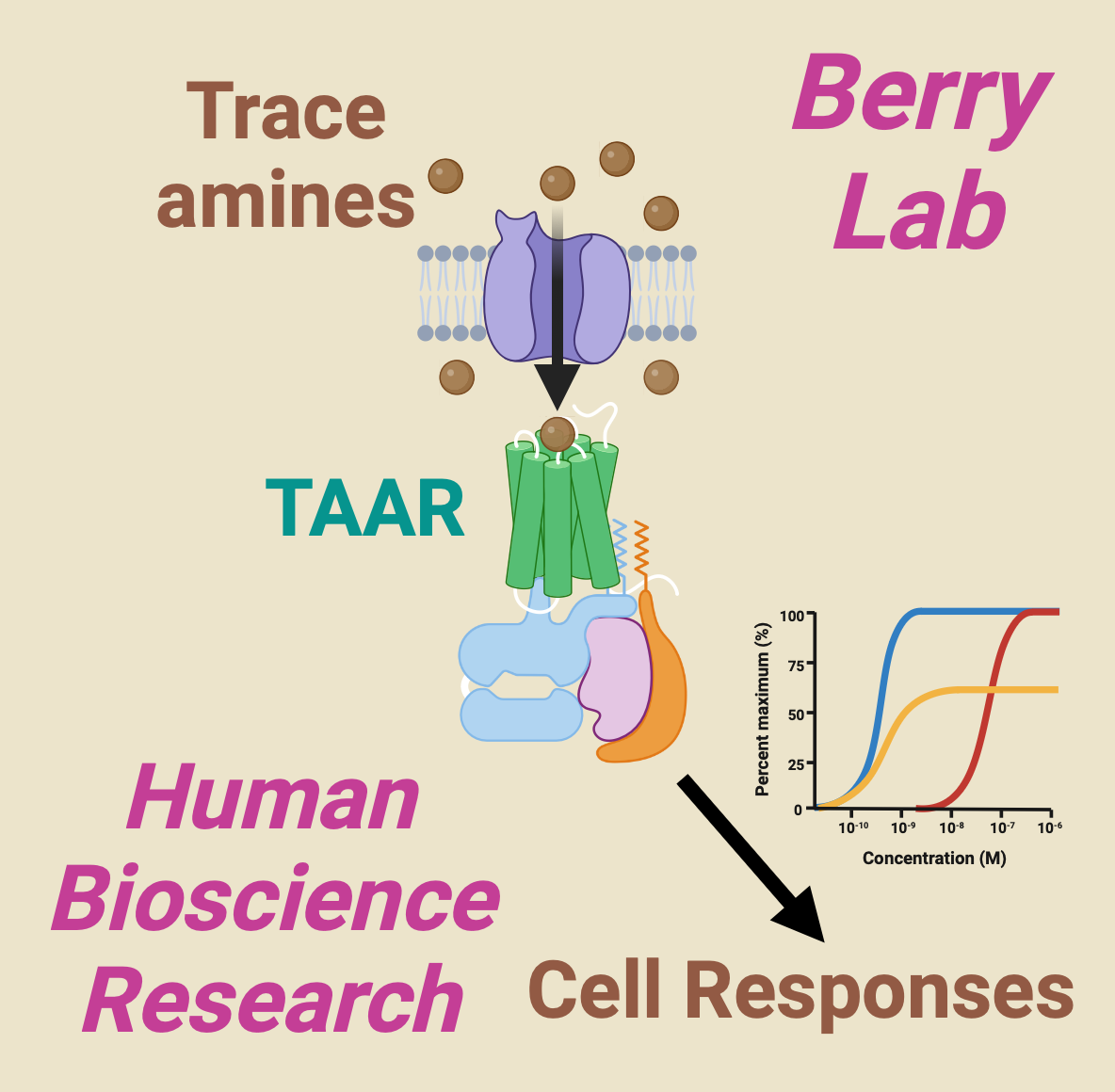Dr. Mark D. Berry
Latest News:
SITE CURRENTLY UNDER MUCH NEEDED UPDATING AND CONSTRUCTION!!!!
Stay tuned, a new, dedicated, more interactive web-site is in development. Link will be posted here when completed. For now, these pages provide a brief, generally accessible, introduction to life in the Berry patch's small corner of acadaemia.
CONGRATULATIONS
August Jensen and Zoe Stevens who have both been offered NSERC-USRA awards for the summer to continue work on our TAAR1 localization studies and TAAR immunomodulatory effects.
Zoë Rowe who has been named an academic all-Canadian for the 2022-23 academic year (picture to follow), and has also been offered a contract for the up-coming season by the semi-professional Simcoe County Rovers team in Ontario.
.jpg)
Shreyasi Sarkar who recently defended her doctoral thesis, graduated and has started a post-doctoral position at Centre de researche du CHUM in the research of group of Dr. Gareth Lim
Teaching Interests

My training is in pharmacology and neuroscience and my main teaching interests fall in two areas: 1) human health therapeutics, in particular for neurologic and psychiatric conditions and 2) mechanisms by which cells communicate with each other and respond to their environments, in particular the role of two broad classes of proteins, receptors and enzymes.
In particular my teaching seeks to emphasize the application of core concepts related to Human Biosciences (Biochemistry, Pharmacology, Chemistry, Physiology) to real world human health and disease scenarios, including how related ethics, economics, politics, regulatory agency, (J)EDI-AR considerations are incorporated. I teach at all levels in our program from open access introductory courses (eg. HuBi 1001, HuBi 2001) through to upper year specialty courses (eg. HuBi 4232), including international learning opportunities, such as Harlow-based courses.
Research Interests

Research in my laboratory is mainly focused on a group of naturally occurring chemicals called trace amines, the proteins (receptors) that are called TAAR and detect the presence of trace amines, and how these are involved in the control of cellular activity. Our research therefore spans basic cell biology and the pharmacology of human health and disease.
Historically trace amine research has focussed on their roles in controlling nerve cell activity in the brain, and ulotaront, a synthetic chemical that activates TAAR1, is the first approved therapeutic for schizophrenia in over 50 years that has a novel mechanism of action, namely targetting a receptor (TAAR1) other than receptors for the neurotransmitter dopamine.
In addition, it is now recognized that trace amines are also involved in controlling cellular activity outside of the brain. In particular they have been shown to regulate cellular responses to nutrients, especially glucose, and also play a role in controlling the responses of immune cells. In recent years our research has focussed on these actions of trace amines and TAAR outside of the brain.
Finally, TAAR have also been established as a new class of receptors for detecting environmental scents, involved in detecting cues related to food, predators, and sex. We are in the final stages of completing a project to better understand the physiological consequences of of these environmental signals.